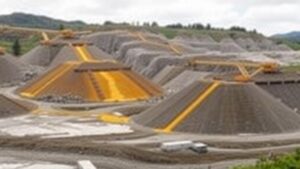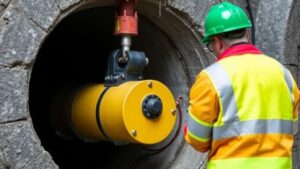How to Set Up a Recirculating Sluice for Gold Prospecting in Water-Scarce Areas
How to Set Up a Recirculating Sluice for Gold Prospecting in Water-Scarce Areas
Gold prospecting is an exciting activity that combines adventure with the potential for financial reward. But, in regions where water is scarce, traditional methods can become impractical. A recirculating sluice system provides an effective solution, allowing prospectors to maximize their gold recovery while minimizing water usage. This article will guide you through the process of setting up a recirculating sluice for gold prospecting, detailing necessary components, setup procedures, and maintenance tips.
Understanding the Recirculating Sluice System
A recirculating sluice is a closed-loop system designed to reuse water instead of directly sourcing it from natural bodies, reducing the environmental impact and enabling gold prospecting in arid regions. The system consists of a sluice box, a water pump, and a collection tub. Understanding how these components work together is essential to effectively using the system.
Required Components
To build a recirculating sluice, you will need the following components:
- Sluice Box: This is where the concentrated material is processed to separate gold from other materials. Make sure it has riffles that enhance gold capture.
- Water Pump: A submersible or centrifugal pump is essential for moving water from the collection tub to the sluice box. Look for pumps with a flow rate of at least 800 GPH (gallons per hour) to ensure adequate water movement.
- Collection Tub: This reservoir collects water and debris, allowing the pump to function efficiently. It should be large enough to ensure the pump remains submerged.
- Hoses and Connections: For directing water from the pump to the sluice box, a series of hoses and connectors will be necessary.
Setting Up the Recirculating Sluice
Setting up your recirculating sluice involves various steps that can typically be completed in under an hour. Follow these key recommendations to ensure a successful setup:
- Positioning: Find a flat, stable surface for your setup. Ensure that the sluice box is on a slight incline, typically between 1-3 degrees, to facilitate water flow.
- Connecting the System: Attach the pump to the collection tub and lead the water flow to the sluice box using hoses. It is critical to ensure there are no leaks in the system.
- Powering the Pump: Connect the pump to a power source. If youre in a remote area, consider using a battery-powered pump for portability.
- Testing Water Flow: Before adding material to the sluice, turn on the pump and allow water to flow through the system for a few minutes. Check for any obstructions and ensure the flow rate is sufficient.
- Adding Material: Once the flow has stabilized, begin adding material to the sluice box gradually.
Maximizing Gold Recovery
To enhance your chances of finding gold using your recirculating sluice, consider the following strategies:
- Classification: Sift through your material before adding it to the sluice to remove larger rocks and particles that may clog the system.
- Regular Cleanup: Periodically stop and clean out the sluice box to prevent the buildup of material that could diminish gold recovery rates.
- Use Proper Techniques: Experiment with the flow rate and angle of the sluice box until you find the optimal settings for your material.
Maintenance and Troubleshooting
Maintaining your recirculating sluice is crucial for ongoing performance and longevity. Here are some maintenance tips:
- Clean the Pump: Regularly inspect and clean the pump to prevent it from becoming clogged with debris.
- Inspect Hoses: Check hoses for leaks or damage, replacing them as needed.
- Monitor Flow Rate: Keep an eye on the water flow to ensure optimal operation throughout your prospecting session.
Real-World Applications
Multiple prospectors have successfully utilized recirculating sluences in various locations, particularly in desert areas like Nevada and Arizona. For example, a group of miners in northern Arizona reported increasing their gold recovery by more than 30% after switching to a recirculating sluice system due to improved efficiency and reduced reliance on external water sources.
Conclusion
The recirculating sluice represents a pragmatic solution for gold prospectors in water-scarce regions. By carefully setting up your system, maintaining the equipment, and employing best practices for gold recovery, you can increase your chances of success while protecting the environment. Whether youre a seasoned prospector or a novice, incorporating a recirculating sluice into your gold prospecting toolkit can provide a sustainable and effective way to enhance your gold recovery efforts.
Actionable Takeaways
- Begin gathering the necessary components to construct your recirculating sluice system.
- Familiarize yourself with the setup process to save time in the field.
- Adjust flow rates and angles for optimal performance based on your specific material.


